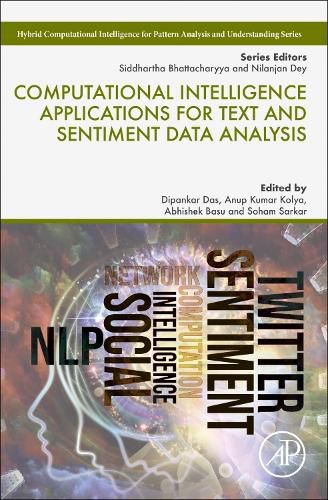Readings Newsletter
Become a Readings Member to make your shopping experience even easier.
Sign in or sign up for free!
You’re not far away from qualifying for FREE standard shipping within Australia
You’ve qualified for FREE standard shipping within Australia
The cart is loading…






Computational Intelligence Applications for Text and Sentiment Data Analysis explores the most recent advances in text information processing and data analysis technologies, specifically focusing on sentiment analysis from multifaceted data. The book investigates a wide range of challenges involved in the accurate analysis of online sentiments, including how to i) identify subjective information from text, i.e., exclusion of 'neutral' or 'factual' comments that do not carry sentiment information, ii) identify sentiment polarity, and iii) domain dependency. Spam and fake news detection, short abbreviation, sarcasm, word negation, and a lot of word ambiguity are also explored.
Further chapters look at the difficult process of extracting sentiment from different multimodal information (audio, video and text), semantic concepts. In each chapter, the book's authors explore how computational intelligence (CI) techniques, such as deep learning, convolutional neural network, fuzzy and rough set, global optimizers, and hybrid machine learning techniques play an important role in solving the inherent problems of sentiment analysis applications.
$9.00 standard shipping within Australia
FREE standard shipping within Australia for orders over $100.00
Express & International shipping calculated at checkout
Computational Intelligence Applications for Text and Sentiment Data Analysis explores the most recent advances in text information processing and data analysis technologies, specifically focusing on sentiment analysis from multifaceted data. The book investigates a wide range of challenges involved in the accurate analysis of online sentiments, including how to i) identify subjective information from text, i.e., exclusion of 'neutral' or 'factual' comments that do not carry sentiment information, ii) identify sentiment polarity, and iii) domain dependency. Spam and fake news detection, short abbreviation, sarcasm, word negation, and a lot of word ambiguity are also explored.
Further chapters look at the difficult process of extracting sentiment from different multimodal information (audio, video and text), semantic concepts. In each chapter, the book's authors explore how computational intelligence (CI) techniques, such as deep learning, convolutional neural network, fuzzy and rough set, global optimizers, and hybrid machine learning techniques play an important role in solving the inherent problems of sentiment analysis applications.